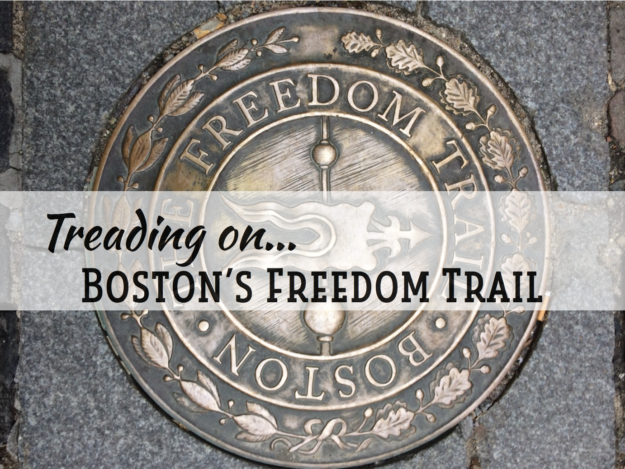
Where is Griffin’s Wharf? You know… the site of the Boston Tea Party?
Upon our trip to Boston, I didn’t realize how much of American Revolutionary War history I did not understand. It wasn’t until I stumbled upon some historical maps that it became clear that comparing maps of Boston then and now would clarify things I didn’t even realize I didn’t understand.
Boston Then:
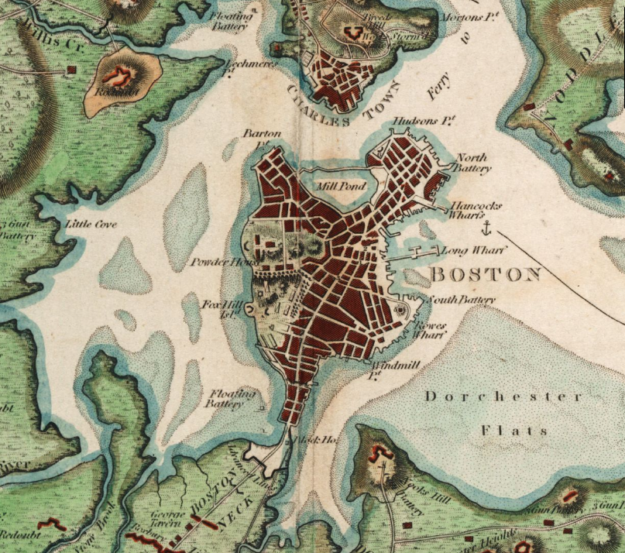
(Above image by R. Phillips [Public domain], via Wikimedia Commons)
Boston Now:
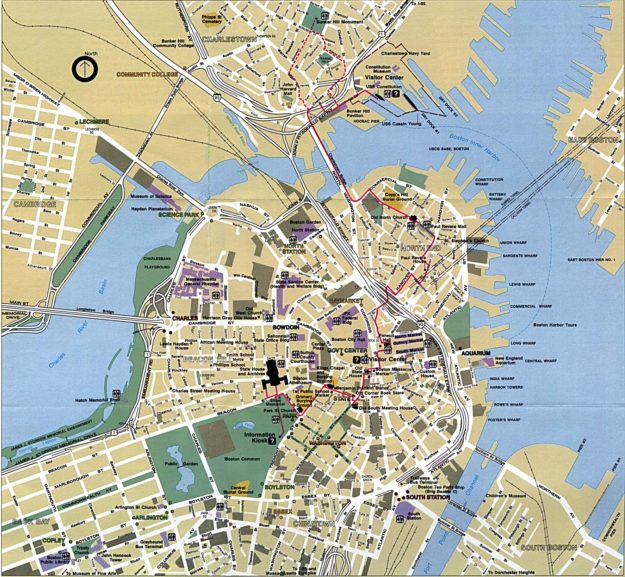
Boston Then (Red) and Now (black) Overlay:
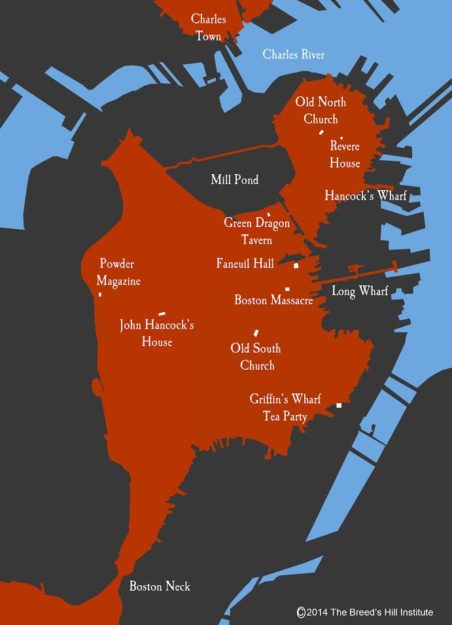
Above image by Dan Shippey, Breed’s Hill Institute. Used by permission.
So… when we searched for the site of the Boston Tea Party and never found it, there was a pretty good reason. Griffin’s Wharf no longer exists. Neither does the tiny “Boston Neck” for that matter, which in 1775 was the only way into Boston. (Okay. Now history is starting to make better sense! Check out Boston Now and Then for a few more photos of Boston today vs Boston during the American Revolution.)
If you’re headed to Boston, this self-guided tour and map (or this one) covers the one-way, 2.5-mile Freedom Trail, which will take at least two hours to complete. (It took us almost an entire day – but we walked the entire trail and all the way back, stopping to tour various sites along the way.) If you don’t have a map, you can just follow the red-brick trail (a red line of bricks on the sidewalks).
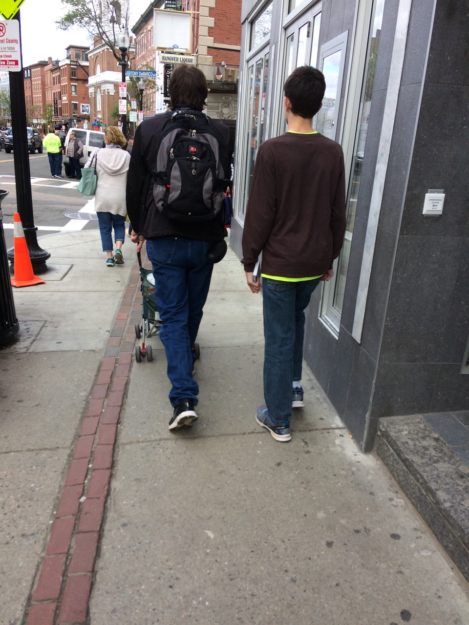
And… just in case you’re looking for shortcuts, this is not a driving tour. It’s a walking tour.
Most of the information I’ve provided in this blog post I learned from The Complete Guide to Boston’s Freedom Trail by Charles Bahne. It’s a great book to have on hand if you’re planning a trip to Boston!
The Freedom Trail starts at Boston Common, America’s oldest public park. This 44-acre plot of land in the middle of the city was originally used for grazing cattle.
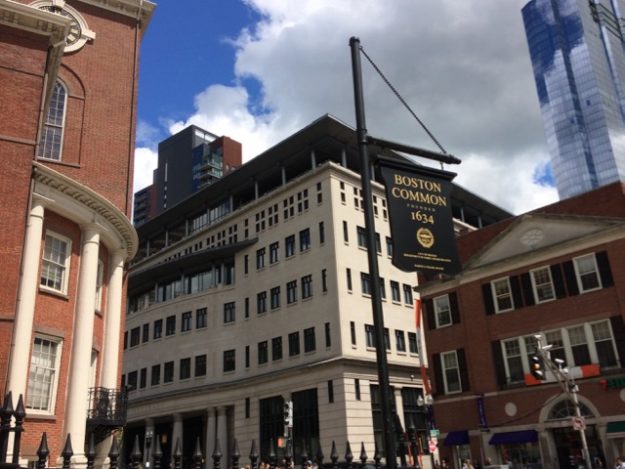
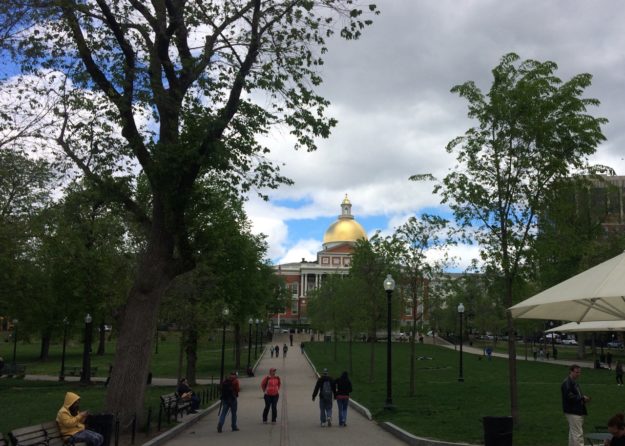
Next to Boston Common also lies Massachusetts State House (aka, the “new” State House, even though it’s more than two centuries old!) It stands on land that was once owned by John Hancock.
The Park Street Church was built in 1809 over the site of the former town granary where grains were stored and sold in the 1700s. The Park Street Church is the site where abolitionist William Lloyd Garrison gave his first public anti-slavery address and where the hymn “America” (My country ’tis of thee…) by Samuel Francis Smith was sung publicly for the first time.
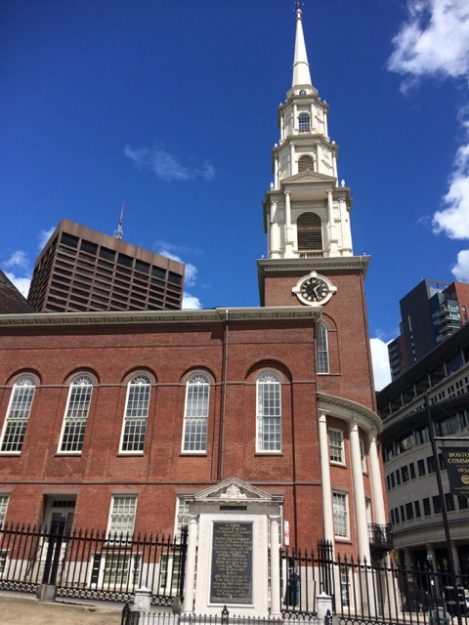
Across the street is The Granary Burial Ground, the final resting place for revolutionary patriots Samuel Adams, John Hancock, Paul Revere, and the victims of the Boston Massacre.
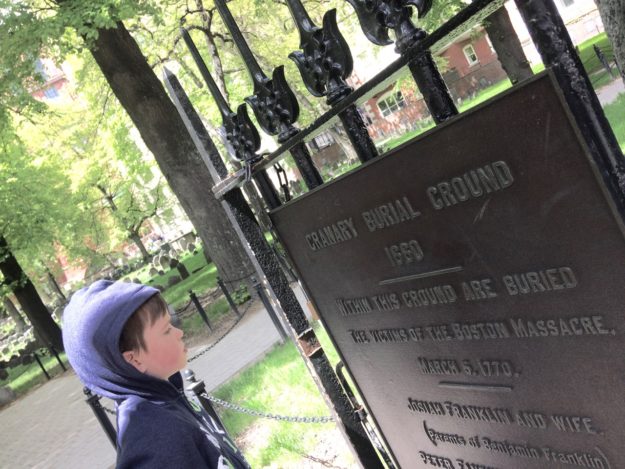
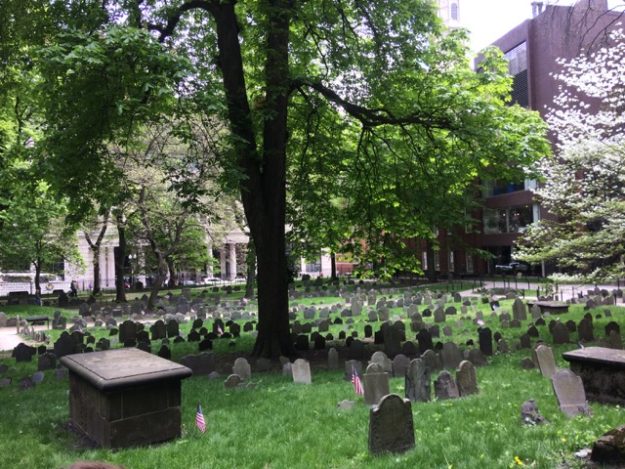
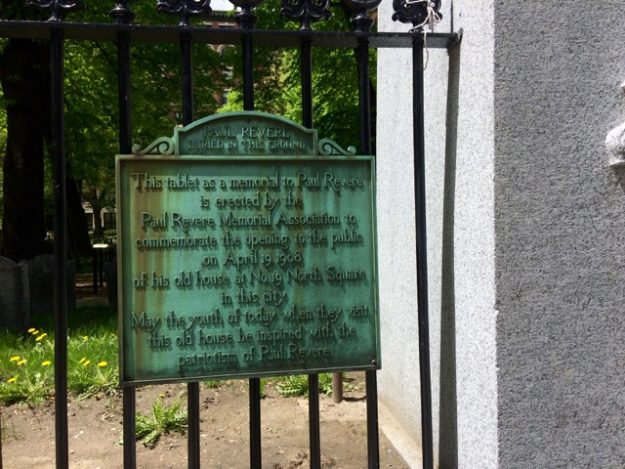
King’s Chapel stands as a reflection of the political and religious conflict of the early colonies. In the late 1600s, this church building was erected by order of King James II to establish an Anglican parish in Boston. Half a century earlier, the Puritans had left England to flee from the corruption they had seen in this official Church of England.
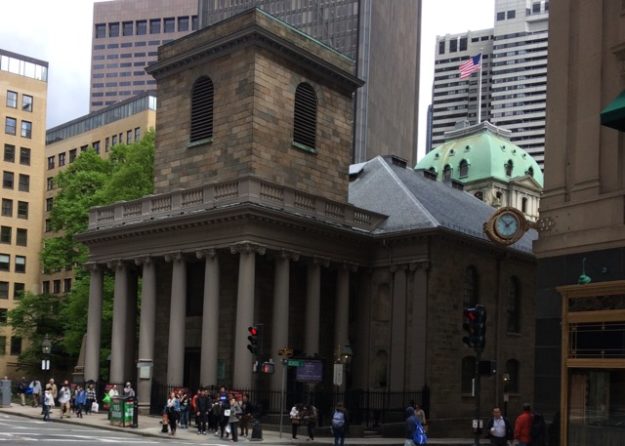
The beautiful box pews within the church provided families with extra warmth during the frigid New England winters. Other things to note about King’s Chapel: it housed the first organ permanently installed in British America, and it holds the oldest pulpit in continual use on the same site in America.
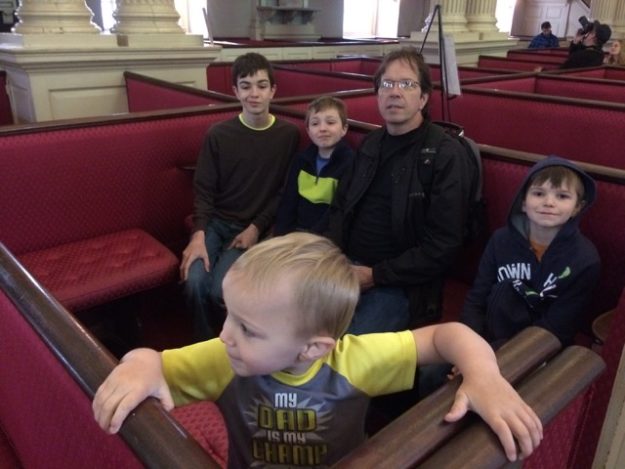
As the largest meeting hall in Boston, the Old South Meeting-House became the site of several of the notable meetings leading up to the American Revolution.
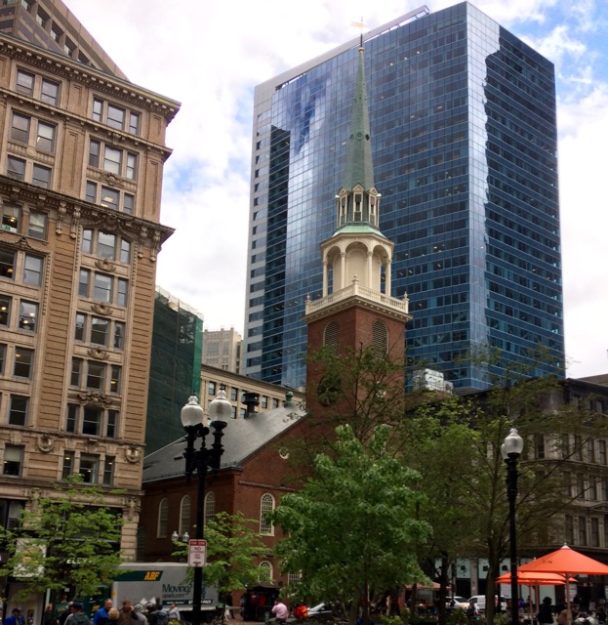
It was at this location that Samuel Adams spoke his famous words, “Gentlemen, this meeting can do nothing more to save the country,” which (according to legend) signaled the Sons of Liberty to disguise themselves and head towards Griffin’s Wharf to dump all the tea stored on the tea ships into the harbor. Although recent research has indicated that his words were not actually a signal, just after he spoke them, colonists dressed as Mohawks met at the meeting-house doors, crying, “To the Wharves! Boston Harbour a tea-pot tonight!”
We were amused by something that looked like a “preacher/speaker squasher” above the pulpit.
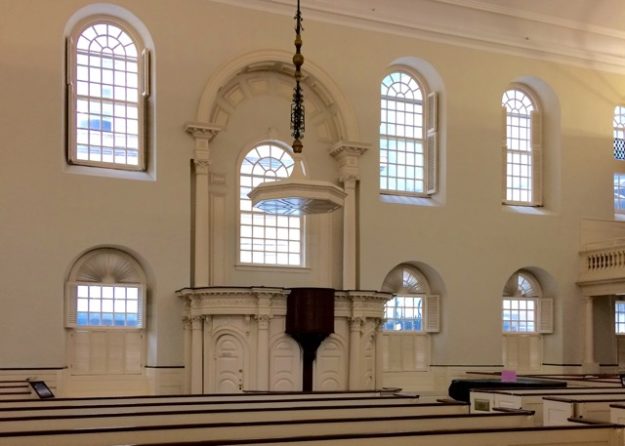
In reality, it’s a “sounding board.” This allowed the sound waves of the speaker’s voice to be focused downwards towards the pews instead of up into the high ceilings.
The Old State House is known as the place where “the child Independence was born.”
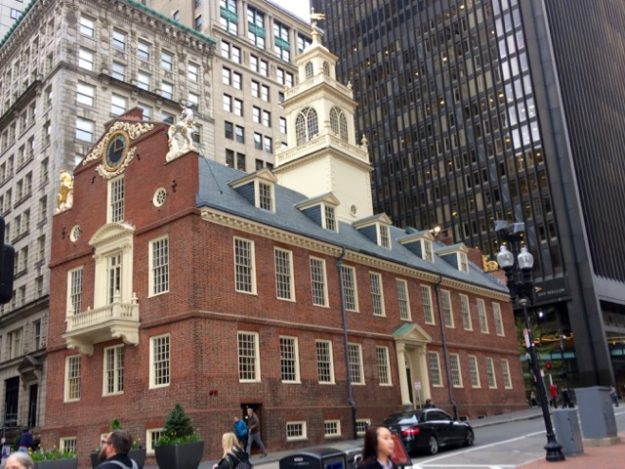
Fifteen years before Americans declared their independence, James Otis gave a speech here against the writs of assistance, which inspired the hearts of those in the audience, some of whom were leading men of the American Revolution. The Old State House is now a museum which has on display one of John Hancock’s velvet coats, as well as a British gun found on King Street just after the Boston Massacre.
Just below the balcony of the the Old State House lies a circle of stones marking the Site of the Boston Massacre. Originally, the stone memorial was placed in the middle of the street, but they have since moved it for tourists’ safety.
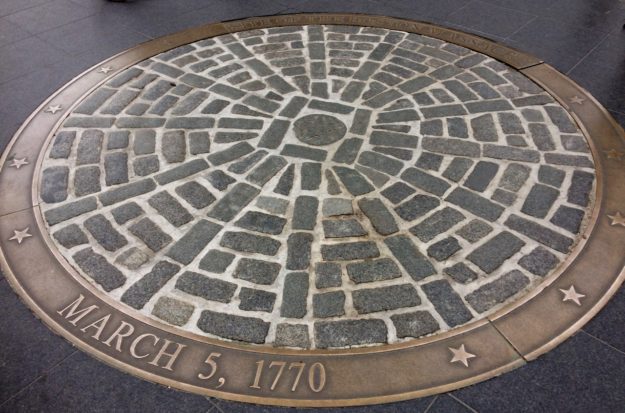
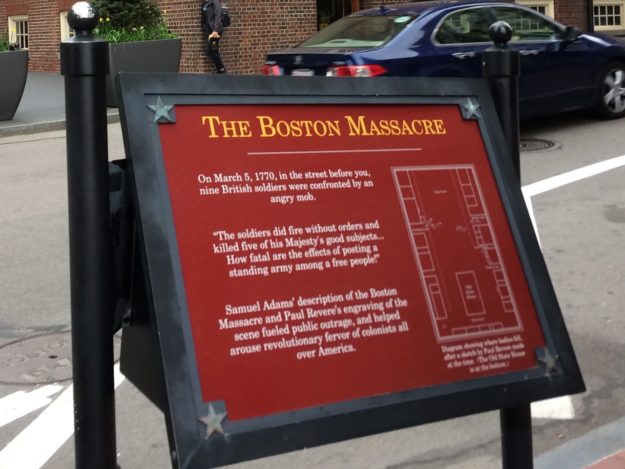
What started as a dispute between a lone soldier and a wigmaker’s apprentice (over a barber bill) turned into a riot that resulted in the first bloodshed of the American Revolution. British Captain Thomas Preston attempted to rescue the lone sentry from the mob of citizens, but in so doing, trapped a handful of his soldiers in the midst of the colonists. As the hostile group approached the British soldiers hurling insults, rocks, and other items at the soldiers, a soldier was knocked down. He retaliated by shooting at point-blank range, and quickly more shots rang out. The end result? Five Bostonians had died and others were injured. The patriots used it as a means of propaganda, and even though it was historically inaccurate, Paul Revere’s engraving ignited a rebellious and defensive spirit among many of the colonists.
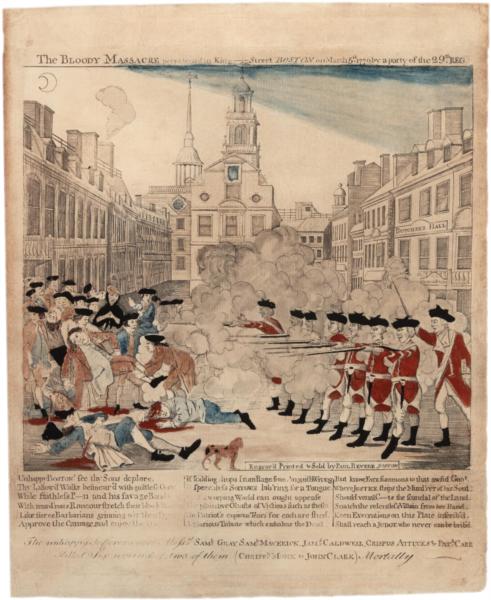
Boston Tea Party?
The original site of the Boston Tea Party (Griffin’s Wharf) no longer exists due to extensive landfills caused by the rapid expansion of the city of Boston in the 19th century. A historical marker commemorating the Boston Tea Party stands on the corner of Congress and Purchase streets. You can now visit the Boston Tea Party Museum, although it’s a few blocks away from the Freedom Trail – and we happened to miss it because it wasn’t on the red-brick trail. Because we were only visiting Boston for a day, we didn’t make it to the museum, but it’s on our bucket list should we have the opportunity to return to the area.
Historical Note: As a thousand people watched from shore, approximately 120 colonists spent about three hours emptying the tea stored on three British teaships into Boston Harbor. The chests held more than 92,000 lbs of tea – enough for over 18 million cups of tea – which would cost nearly one million dollars today. After the rebellious deed, no rejoicing was heard in the streets – just a quiet calm filled the air as colonists anticipated what might be done by the British in retaliation.
Nicknamed “the cradle of Liberty,” Faneuil Hall became the primary site for Boston town-meetings where patriots would speak publicly against British rule. Not only was it the chief rallying place for protesting the Sugar Act, the Stamp act, the Townshend Acts, and the Tea Act, Faneuil Hall has also been a chief site of America’s anti-slavery movement, women’s rights movement, early temperance rallies.
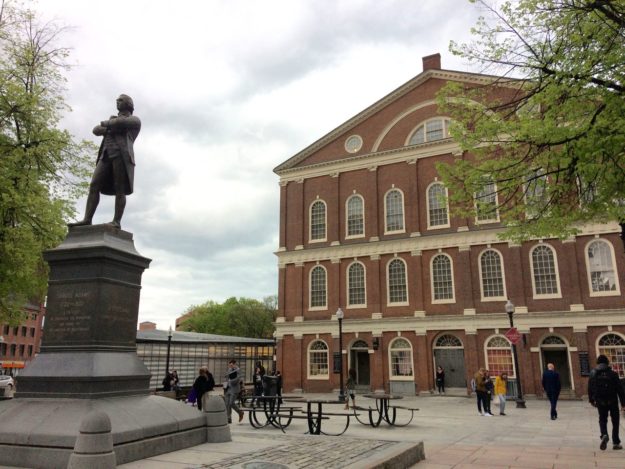
The doors behind Samuel Adams’ statue open up to the National Park Visitor Center (and the marketplace stores); on the second floor resides the town meeting hall, which is still used for meetings and events today; and over the hall in the “attic” is an armory museum.
Paul Revere House. Paul Revere bought this house in 1770, ninety years after it was built. Today it is open for tours.
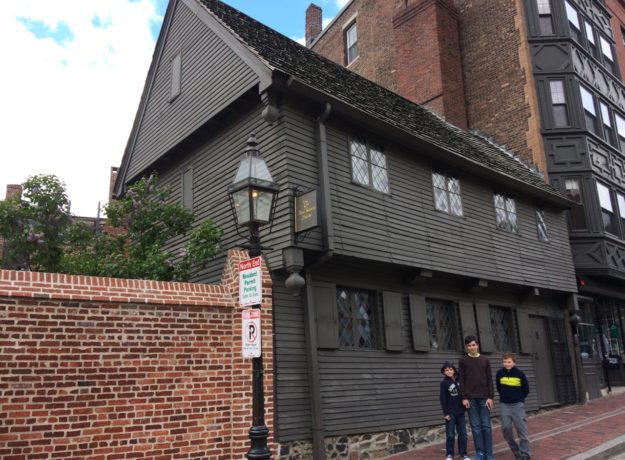
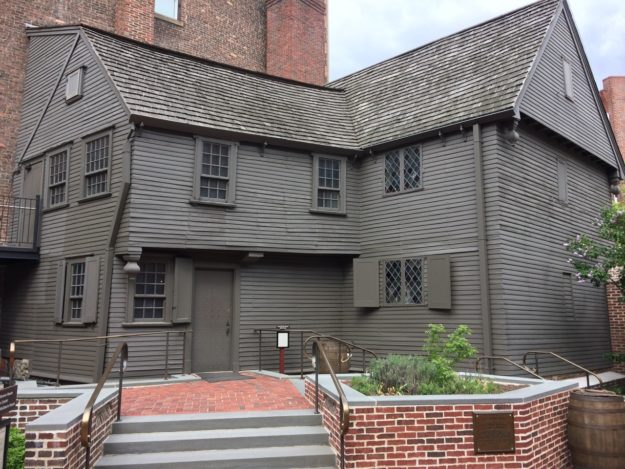
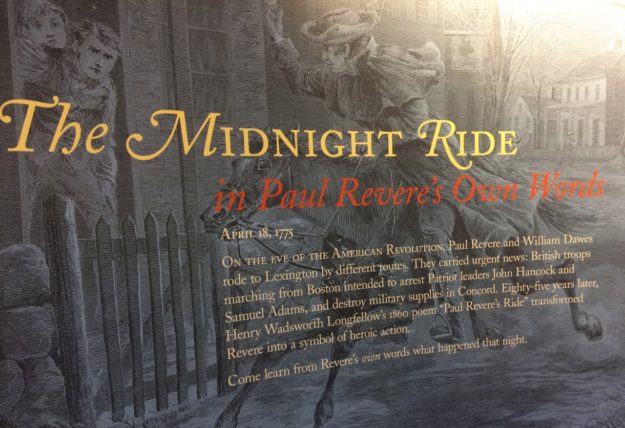
Although mostly known today as a silversmith and patriot, Revere also made false teeth, copperplate engravings (which led to some of his published political propaganda), and copper bells.
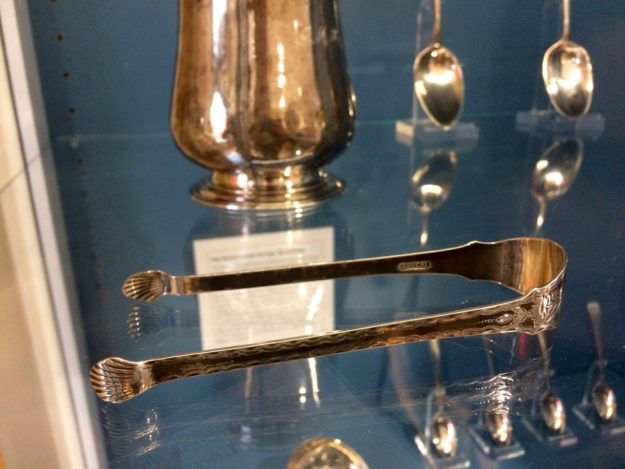
As a trusted express rider, he carried important messages across the colonies. Of course, his most famous ride (made so by Henry Wadsworth Longfellow’s poem “Paul Revere’s Ride”) took him to Lexington, which is only 13 miles away. After that famous ride, he did not return home for nearly a year. His oldest son stayed in Boston to prevent the home and shop from being ransacked by British troops during this tumultuous time.
The steeple of Old North Church rises above the surrounding buildings. It is here on the night of April 18, 1775 that Paul Revere’s signal lanterns provided a warning to the country of the march of the British troops.
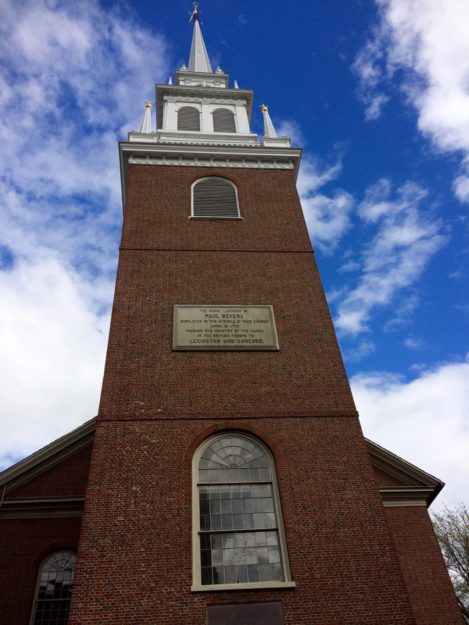
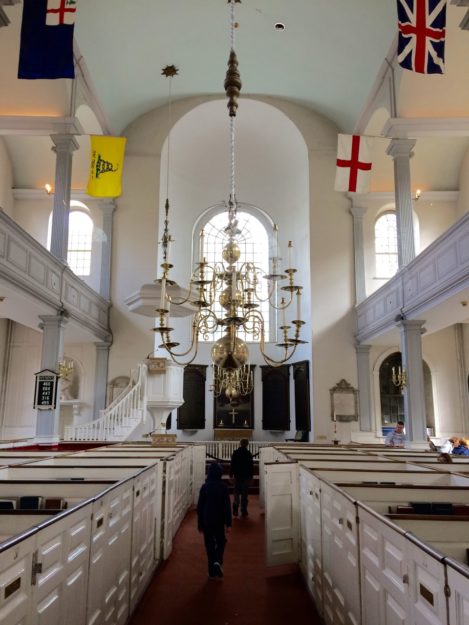
Revere called upon a friend – purported to be Robert Newman, the church caretaker – to make the signals: “One, if by land, and two, if by sea.” After lighting the lanterns, Newman escaped through a window of the Old North Church, now affectionately named, “The Newman Window.”
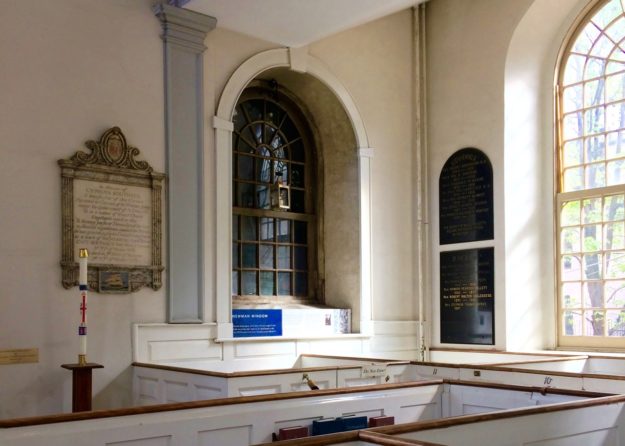
While Longfellow’s “Paul Revere’s Ride” is one of America’s most famous literary masterpieces (and one of my personal favorites!), it includes historical inaccuracies and thus should probably not be used as a history lesson by itself. For example, the lanterns were not signals to Revere on the opposite shore, but they were signals from Revere in case he were unable to escape safely from Boston (across the Charles River to Charlestown) with his message. You can read Paul Revere’s account of his famous midnight ride and compare it to Longfellow’s poem. This is a great lesson on primary source documents, too!
Crossing the Charles River….
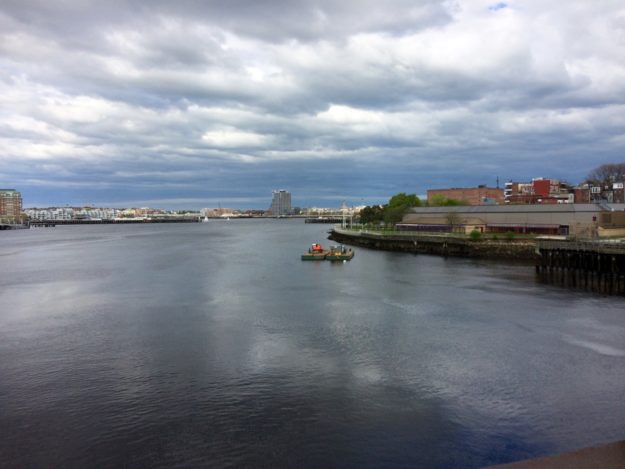
takes you over to Charlestown, location of the final stops of the Freedom Trail. As you cross the bridge’s pedestrian walkway and look back, you can see the steeple of the Old North Church peeking above the nearby buildings.
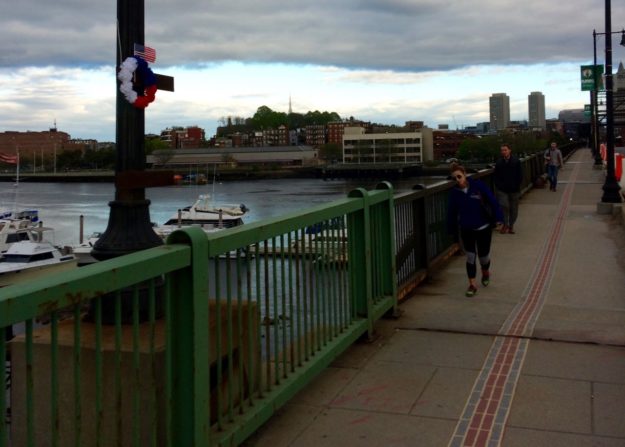
A true highlight of our Boston trip was the U.S.S. Constitution or “Old Ironsides,” the most celebrated ship in American history. As one of the U.S. Navy’s first vessels, the U.S.S. Constitution boasts its greatest achievements during the War of 1812. When we visited Boston, it was in dry docks for repair.
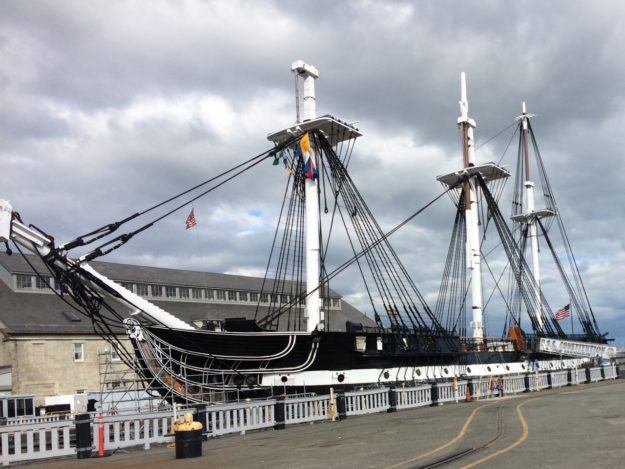
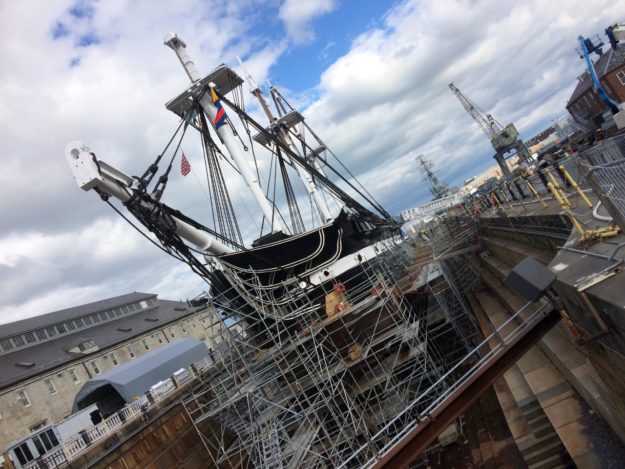
And while the ship was closed for tours due to its current rehabilitative state, it was beautiful to see the ship in its entirety. Supported by donations, the USS Constitution Museum was an absolute delight for our boys. 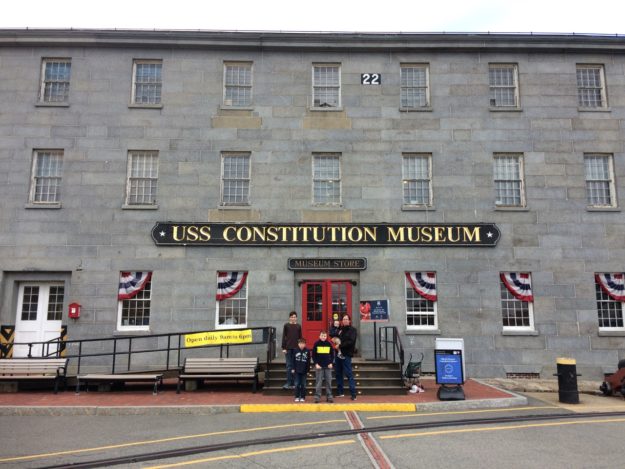
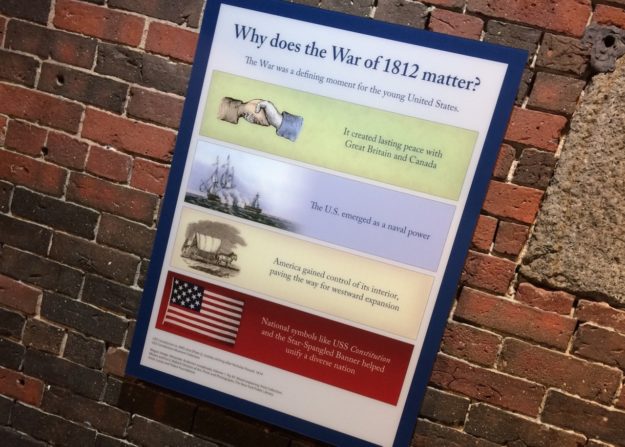
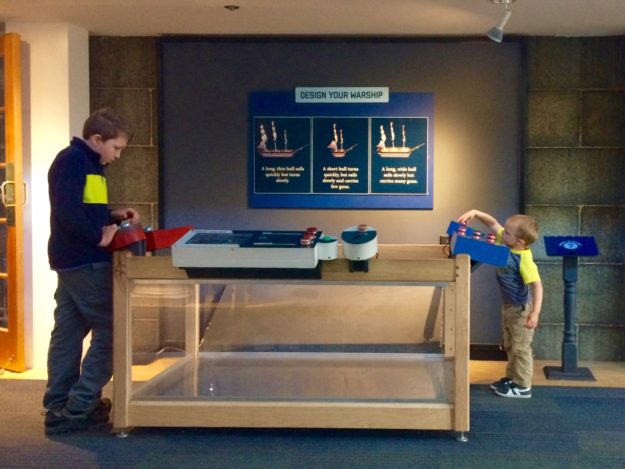
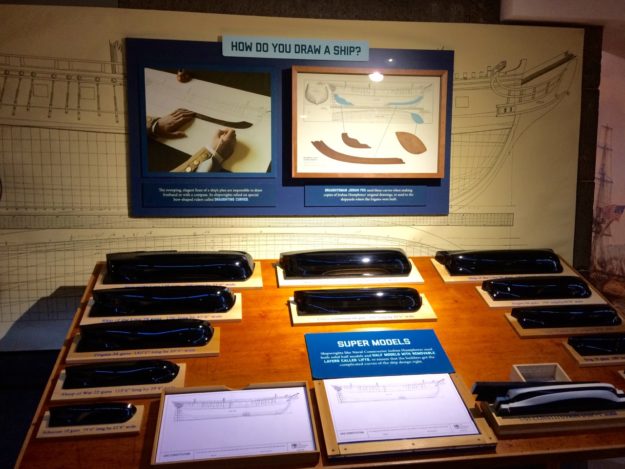
There was much to see and learn here not just about the War of 1812, but also about ships in general!
And now we finally arrive at our final stop, Bunker Hill, deemed by many to be the first major battle of the American Revolution. It was here that New England soldiers prepared to defend themselves against the British.
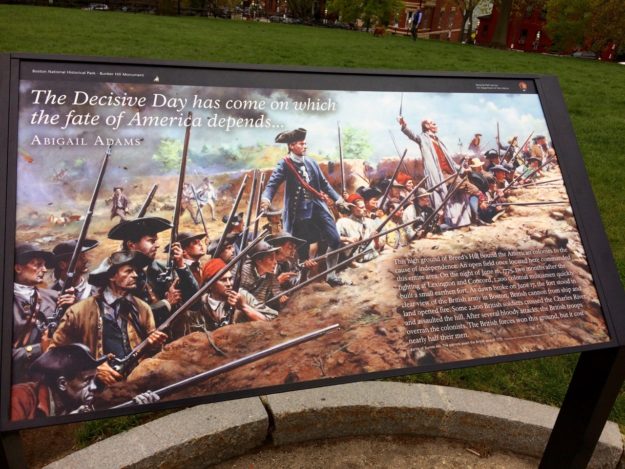
This battle indicated to the world that the colonists would not be easily defeated as previously thought. After successfully fending off two assaults from the British, the colonists ran out of gunpowder during the third assault. Because of this, the Battle of Bunker Hill was considered a British victory, but at great loss to the British troops. British General Gage admitted, “The loss we have sustained is greater than we can bear,” for nearly half of his men had lain wounded or dead at the close of the battle. American casualties were only a fraction in comparison – less than 500, from a much larger number of soldiers.
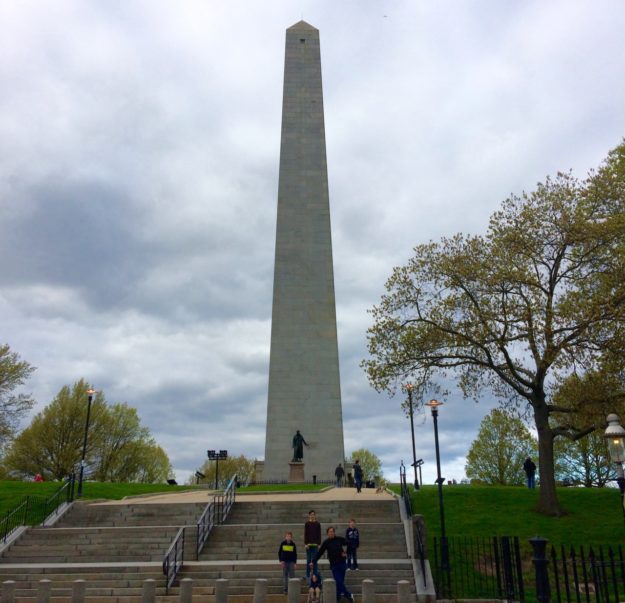
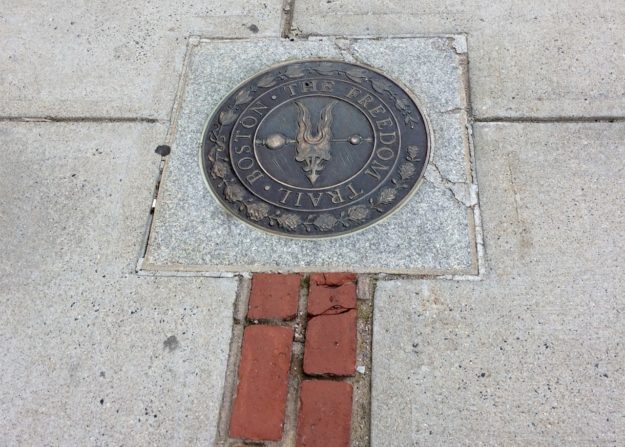
And that marks the end of the trail for us! While there are many more sites to visit along the Freedom Trail, we hope this provides everyone – especially those who may never be able to make the trip – an inside look at the historical significance of Boston!
Our Favorite Books, Videos, and Audios about the American Revolution
Liberty’s Kids DVD Set – Complete Series. An enjoyable and historically accurate animated series about the American Revolution.
Adventures in Odyssey – For God & Country.Thrilling audio drama! Join Christopher Columbus, Paul Revere, Francis Scott Key, slaves traveling the Underground Railroad, and Abraham Lincoln on this adventure through U.S. History. In fact, we love all of the Adventures in Odyssey books and audios!
Johnny Tremain. After an apprenticed silversmith injures his hand in an accident, he becomes a messenger for the Sons of Liberty during the American Revolutionary War. Riveting novel involving the pivotal events shaping the American Revolution from the Boston Tea Party to the first shots fired at Lexington. A Challenge 1 book also on the Thomas Jefferson Education and Sonlight reading lists (among others).
Mr. Revere and I. A tale of the Sons of Liberty and early Revolutionary War days from the perspective of Paul Revere’s horse.
Drive Thru History® – “America: Columbus to the Constitution.” We have thoroughly enjoyed the Drive Thru History “virtual” tours that take us to the places of historical events while providing a humorous and engaging history lesson.
George vs. George: The American Revolution As Seen from Both Sides. There are two sides to every story! We love this comparison between the two Georges during the American Revolution for upper elementary students.
You Wouldn’t Want to Be at the Boston Tea Party!: Wharf Water Tea You’d Rather Not Drink. Includes historical details in a great format.
Paul Revere’s Ride. The words to Longfellow’s poem with wonderful illustrations. Beautiful book! Listen to a free recording by Jim Fish on Librivox. (Download MP3 here.)
Can’t You Make Them Behave, King George? This book makes us laugh out loud. A great way to introduce children to the American Revolution from the perspective of King George.
Where Was Patrick Henry on the 29th of May? Although Jean Fritz has several books related to the American Revolution, this one and the one above are our favorites. The book makes the person of Patrick Henry and his stirring speech come to life, so much so that our children have enjoyed enacting it as a drama in our home.










